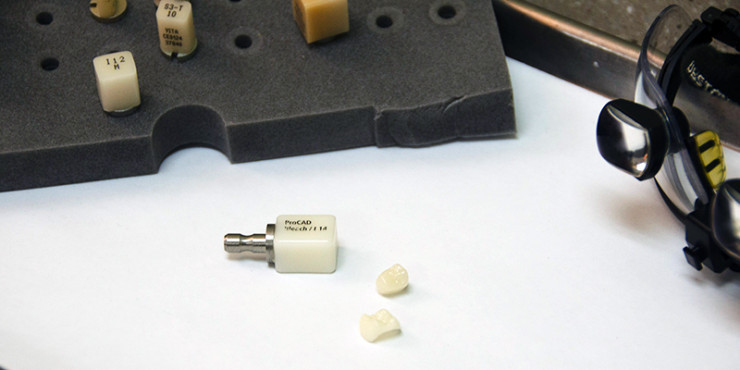What are crowns and bridges? A crown is a protective covering that is bonded or cemented onto your tooth. A bridge is simply three or more crowns linked together. Crowns and bridges are quality restorations and are an excellent investment in your long-term dental health.
Bridges
Bridges are natural-looking dental appliances that replace a section of missing teeth. Because they are custom-made, bridges are barely noticeable and can restore the natural contour of teeth as well as the proper bite relationship between upper and lower teeth. By providing a continuous chewing surface, a bridge helps to keep teeth from drifting out of position, protects teeth and improve aesthetics.
Bridges are sometimes referred to as fixed partial dentures, because they are semi-permanent and are bonded to existing teeth or implants. Some bridges are removable and can be cleaned by the wearer; others need to be removed by a dentist. Appliances called implant bridges are attached to an area below the gum tissue or the bone.
Porcelain, gold alloys or combinations of materials are commonly used to make bridge appliances.
Crowns
Crowns are synthetic caps that are usually made of a material like porcelain and placed on the top of a tooth. Crowns also serve an aesthetic use and are applied to restore a discolored or stained tooth to its natural appearance. Crowns are sometimes confused with veneers, but they are quite different. Veneers are applied only to relatively small areas, like a single tooth.
Crowns are typically used to restore a tooth's function and appearance following a restorative procedure such as a root canal. Or, when decay in a tooth has become so advanced that large portions of the tooth must be removed, crowns are often used to restore the tooth. Crowns are also used to attach bridges, cover implants, prevent a cracked tooth from becoming worse, or when an existing filling is in jeopardy of becoming loose or dislocated.
Crowns are custom-made in a dental laboratory by highly qualified technicians using ceramics, noble alloys or a combination of both.
Procedures. A tooth must usually be reduced in size to accommodate a crown. An impression is made of the existing tooth and sent to a special lab, which manufactures a custom-designed crown. In some cases, a temporary crown is applied until the permanent crown is ready. Permanent crowns are then cemented in place.
Caring for Your Crowns. With proper care, a good-quality crown can last up to eight years or longer. It is very important to floss in the area of the crown to avoid excess plaque or collection of debris around the restoration.
Certain behaviors such as jaw clenching or bruxism (teeth grinding) significantly shorten the life of a crown. Moreover, eating brittle foods, ice or hard candy can compromise the adhesion of the crown, or even damage the crown.
CEREC® One-Day Crowns
The innovative CEREC® system lets us make a digital impression of the tooth, and create and cement into place a quality, durable crown — all in a single appointment! To learn more about this new technology, click here.

